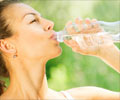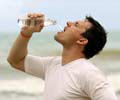A study was conducted to check the distribution and relationship between element levels in water and water mite species in two lakes in Turkey and the results are quite interesting.

In the study, water mites were chosen as model species since they are considered as a significant biological indicator organism in order to determine clean water source. Water samples containing the water mites were taken from two parallel points of each lake at particular intervals. They were analyzed with ICP ((ICP-OES Instrument Spectro Genesis Fee, Germany) equipment to determine water characteristics and the amount of contained elements in both lakes.
Correlation analysis, (a statistical method to determine the degree and direction of the relationship between different variables) was carried out with the acquired data to study the relationship between distribution of water mite species and water parameters. Numerous correlation coefficients such as the Pearson correlation coefficient, Canonical correlation coefficient, partial correlation coefficient were used to calculate in various ways for different purposes.
The lake formations, geomorphologic characteristics, ecosystems and climatic conditions of both the lakes were also studied. The results of the analysis showed that Karamik Lake had 21 water mite species as compared to 8 for Eber Lake. It should be noted that water mite species in Karamik Lake were taken from various levels and depths whereas for Eber Lake, they were mainly from areas close to the surface of water.
The study also revealed intense eutrophication and pollution in Eber Lake due to excessive nitrogen and phosphate domestic waste in the water. However, no significant eutrophication was observed in Karamik Lake since there was no domestic and industrial waste discharged into it.
Correlation analysis for each of the parameters of water revealed an insignificant relationship due to the negative influence of heavy metals contained in the water elements on the abundance of water mite species (−0234). Thus, it was deduced that if the amount of heavy metals in the lake water increases, the number of water mite species will decrease.
The study showed that heavy metals restricting the lives of living creatures is quite low, thus indicating that there is no negative impact on living creatures. From the results, it could be concluded that change in the lake water composition was not a significant determining factor in the number of species and diversities of water mites and the amount of values contained in the water is not sufficient to have a negative impact on the species.
Aşçı, F., Bahadır, M. and Akkuş, G. (2015). Study on the Impact of Elements in Water on the Diversity of Water Mites (Acari, Hydrachnidia) Species. Advances in Bioscience and Biotechnology, 6, 259-264. doi: 10.4236/abb.2015.64025. Retrieved on 16 July 2015 from http://www.scirp.org/Journal/PaperInformation.aspx?PaperID=55370
Source-Medindia












